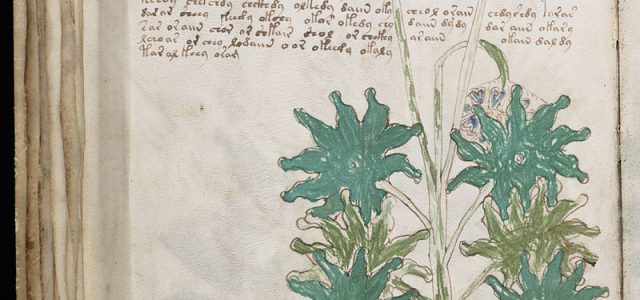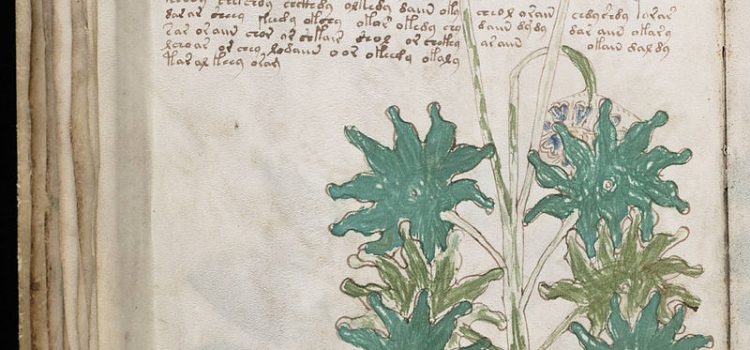


The Voynich Manuscript has baffled many for the past many centuries. It refers to an undecipherable manuscript which is famously known as a book that nobody can read. Based on carbon-dating, it is believed to have been written sometime at the end of 15th century or in the early years of the 16th century. It is named after Wilfrid M. Voynich, an American Bookseller, who discovered the manuscript in an Italian Jesuit College. The book is presently available at Yale Library, popularly known as a rare books library.
The confusing drawings, puzzling symbols and a beautifully written language in an undecipherable text, all this makes the Voynich manuscript appear quite fascinating. But to our sheer disappointment, no one has ever been able to clearly understand and decode the language of this manuscript and the message that it carries. Moreover, the date, origin and the language-everything about this book is debatable for the very reason that the whole text contains scientific, botanical or figurative drawings made in ink. This artistic text of the book is sometimes referred to be magical or scientific as the book looks appealing at the very first look. Be it the fine and vibrant shades of colors like red, green, blue and yellow or the drawings of some provincial character, the book displays a unique combination of knowledge, art and creativity.
The manuscript has 250 pages containing unintelligible writings made by using unknown alphabets. There is no apparent classification of Voynich text into headings, sub-headings or chapters. On the basis of the subjects as displayed by the fine drawings, the contents of the book can be categorized into six major sections.
- Botanical content comprising 113 drawings of unidentified plants
- Astrological and astronomical drawings consisting of Zodiac Symbols, suns, moons, stars, astral charts in the shape of circles
- Biological content with countless drawings of nude females having swollen abdomen or interacting awkwardly with capsules or interconnecting tubes etc
- A wide collection of nine cosmological medallions including geographical images
- An elaborate array of pharmaceutical designs containing more than 100 species of medicinal roots and herbs kept in colorful vessels
- Some pages of texts having star-shaped flowers and believed to be containing some recipes.
The significant thing that cannot be left unnoticed is the pattern in which the book is written. The author has written the manuscript from left to right. The font and size of characters used is inconspicuous. There are no punctuation marks at all. Thus, without inspecting the illustrations, it can be concluded that this manuscript related to European origin in some manner. Moreover, there is nothing that displays corrections which apparently shows the accuracy of the author.
Over the years, researchers have burnt the midnight oil by trying to read the unreadable Voynich Manuscript. All such efforts went in vain until during 2014, Stephen Bax, an England Professor of applied linguists at Bedfordshire University, claimed to have cracked ten words of the unknown language used in the script. He proudly says that on the basis of his research of Arabic and some other languages plus the study of medieval herbal manuscripts, he has been successful to identify words for coriander, juniper and hellebore. He further states that he has also found a word for Taurus written nearby an illustration of a star cluster called Pleiades. Bax has also shared his ideas about Voynich through a YouTube video available on his website.
From the aforesaid, it will be quite apt to say that there is certainly a story behind the manuscript which may never be known. Though some have labeled it as “gibberish hoax text” but the statistical properties of the Vyonich language and the artistic illustrations do pose a strong argument that this manuscript is a buried treasure filled with knowledge and of course, mystery.






